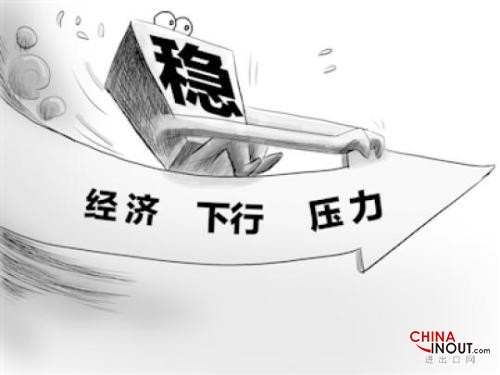新華社引用習近平周二的講話稱,盡管有全球貿易疲軟以及高內債等不確定因素,中國未來的年經濟增長率仍然能保持在7%左右。
新華社援引習近平的講話,稱中國在未來五年內將保持不低于6.5%的年平均增長率,以實現實現國內生產總值和城鄉居民人均收入比2010年翻一番的目標。
在第三季度,中國的增長率跌至6.9%,達到經濟危機以來的最低谷。此番重挫部分源自于投資減少以及央行下調利率和最低存款準備金的舉措。
習近平表示:“綜合起來看,我國經濟今后要保持7%左右的增長速度是可能的,但面臨的不確定性因素也比較多。”習近平還提到,國內外主要研究機構普遍認為,在2016年至2020年即“十三五”時期中國國年均經濟潛在增長率為6%到7%。
習近平說:“從國內生產總值翻一番看,2016年至2020年經濟年均增長底線是6.5%以上。”
習近平說,預計全球貿易將持續蕭條,中國的消費和投資會因此放緩,并且中國還可能面臨著高負債水平的潛在危機。
習近平在解釋“十三五”計劃(即中國在2016年到2020年的經濟社會發展藍圖)時提及,未來五年的發展重心不僅要放在經濟增幅上,還要放在其質量上。
最高領導人為放緩的增長冠以“新常態”之名,中國政府正試圖把世界第二大經濟體轉變為可持續、消費者主導的發展模式。
中國總理李克強稱中國在未來五年里需要至少6.53%的年增長數目。本周二,在國家電臺中,李克強的講話指明環保措施的推行也是經濟增速放緩的原因之一。
投資者們正在等待政府宣布下一個五年計劃經濟增長目標。在一場關于該五年計劃的重要黨內會議后,有官報稱中國計劃保持“中等偏上”的經濟增速,來實現GDP和人均收入翻一番的目標。
政策討論方面的消息來源稱,鑒于當下全球經濟動蕩,國內需求疲軟,決策者也許會在制定長期增長目標時遇到更多困難。
有關消息來源稱,中國政府會更傾向于在“十三五”期間保持6.5%到7%的增長率。該目標將在明年三月經由人大審議決定。
中國發改委主席徐紹史稱,中國有條件在未來五年內將經濟增幅保持在中等偏上的水平。
徐紹史在新聞發布會上說,相比于經濟增長數據,中國政府會更傾注更多注意力在就業、收入以及物價上。
官方數據顯示,中國政府會超越“十二五”期間的經濟增速,達到7.8%的水平。但是在那時,經濟增速已經顯然下滑,從2011年的9.5%下滑到二十五年來的低谷7%。(中國進出口網)
China can maintain annual economic growth of around 7 percent over the next five years but there are uncertainties, including weak global trade and high domestic debt, Xinhua news agency quoted President Xi Jinping as saying on Tuesday.
Annual average growth would be no less than 6.5 percent in the next five years to realize the country's goal of doubling 2010 gross domestic product (GDP) and per capita income by 2020, Xinhua quoted Xi as saying.
Chinese growth dipped to 6.9 percent in the third quarter, the weakest since the global financial crisis, hurt partly by cooling investment and prompting the central bank to cut interest rates and bank reserve requirements again.

"It's possible for China's economy to maintain growth of around 7 percent (over the next five years) but it also faces more uncertainties," Xi said, saying that main domestic and foreign research institutions believe China's potential growth could be between 6 and 7 percent in 2016-2020.
"Looking at the need to double GDP, the bottom line for annual average economic growth between 2016 and 2020 is more than 6.5 percent," Xi said.
Global trade was expected to remain sluggish and growth in China's consumption and investment could slow, and there may be risks from high debt levels, Xi said.
Development over the next five years should not focus just on the pace of growth, but also on the quality, Xi was quoted as saying, explaining a proposal for the country's 13th five-year plan, a blueprint for economic and social development between 2016 and 2020.
Top leaders have flagged a "new normal" of slower growth as it tries to shift the world's second-largest economy to sustainable, consumption-led development.
Premier Li Keqiang has said that China needs annual growth of at least 6.53 percent over the next five years. He was quoted by state radio as saying on Tuesday that environmental protection measures had contributed to the growth slowdown.
Investors are waiting for the announcement of an economic growth target for the next five years. A communique issued after a key party meeting that discussed the five-year plan said China aims to keep the economy growing at "a medium-to-high rate" to achieve the goal of doubling GDP and per capita income.
Policymakers may face more challenges in deciding the long-term growth target given uncertainties in the global economy and signs of weakness in domestic demand, sources involved in policy discussions say.
The government may favor annual growth of between 6.5 percent and 7 percent for 2016-2020, some sources say. The growth target needs approval from parliament when it meets in March.
Xu Shaoshi, chairman of the National Development and Reform Commission (NDRC), the top planning agency, said China had the conditions to keep economic growth at a medium-to-high rate in the next five years.
Xu told a news conference that the government would give more attention to employment, incomes and consumer prices than economic growth figures.
The government will exceed the 7 percent target for the current 2011-15 five-year plan with growth averaging around 7.8 percent, official data shows. But growth has slowed markedly in that time, from 9.5 percent in 2011, to being on track for a quarter-century low of around 7 percent this year.











